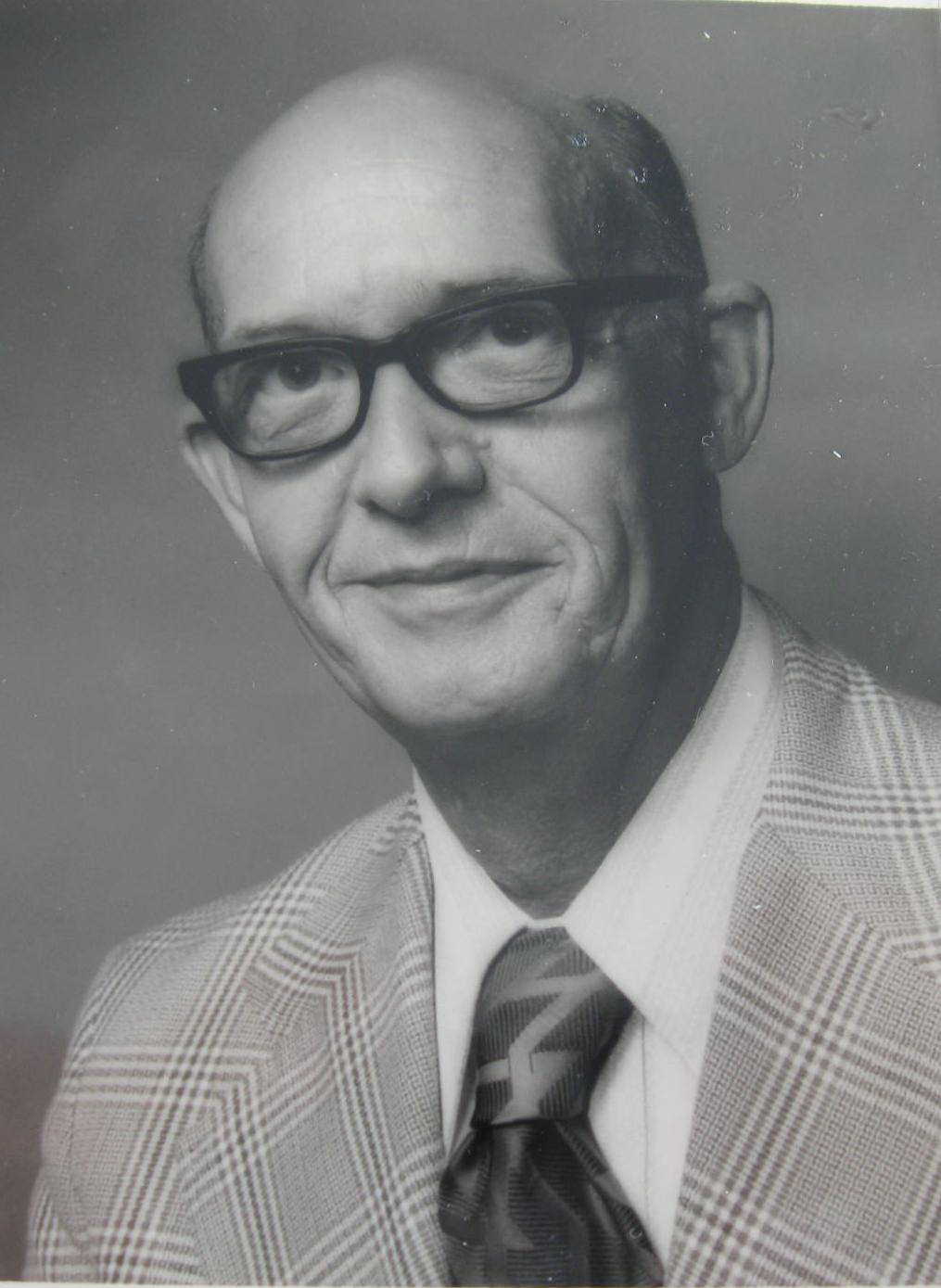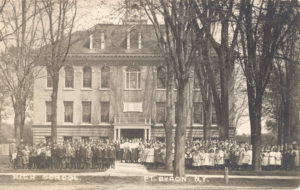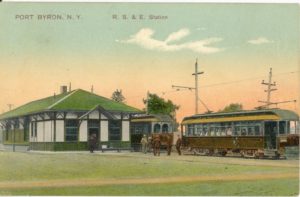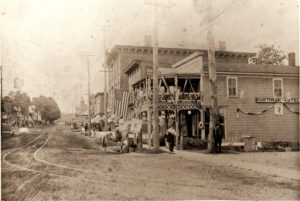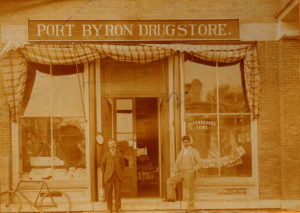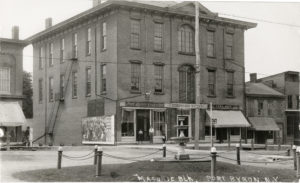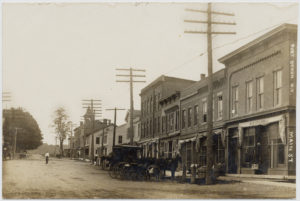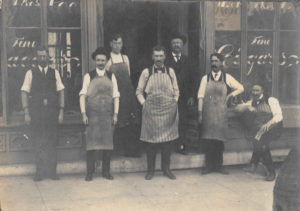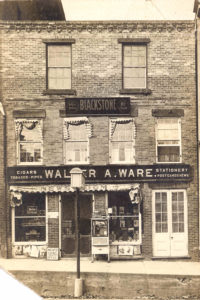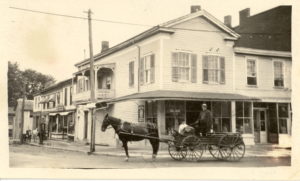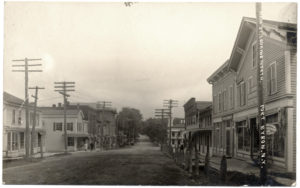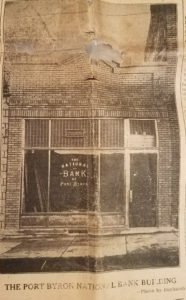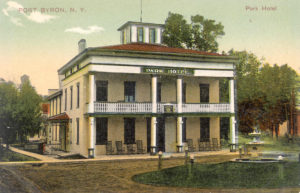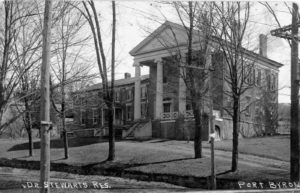editor- This was written by Burdett Ray in 1998 shortly before his death. His obituary states that; “He was happy to share his knowledge of things and people with whom he came in contact.” These personal recollections help to bring the past to life.
This was transcribed by his son Ron, and Ron notes that there were a few words or letters that he couldn’t make out. I have made a couple corrections or additions that I placed in brackets [ ]. It appears that Burdett had photos that he was describing and these were not supplied, so I pulled what I could find from our collection. We thank the family for sharing this with us.
The Erie Canal was responsible for putting Port Byron on the map. It continued to grow after the Erie was replaced by the Barge Canal. When I was growing up in the [nineteen] teens and twenties, it was a bustling town various local [businesses] such as Gutchess’s Mince Meat Factory, Cower Brass Foundry, Warren’s Feed and Flour Mill, Ginsberg ladies dress factory, Apple Dryer Plant, large electric power station, Turner’s [Tanner’s] Boat Yard, trolley connections to Syracuse, Rochester and Auburn, Weston’s Telephone Office and more than 20 retail stores, 4 restaurants, 2 barber shops, and a new bank. Some locals commuted to Auburn and a few to Syracuse.
Let’s go for a walk south on Main Street. We will start at the RSE [Rochester, Syracuse and Eastern] trolley tracks, which became an entrance to the new school in the ’40s, after the old school burned. I can remember how great it was when the inside restrooms were built onto the west side of the old building. A. A. Gates arrived at PBHS in 1921. The house where I was born was at about the spot of the rear entrance to the west wing of the new school. This house now sits on Main Street where the Erie Canal was filled in.
Next, came the trolley station with the nice waiting room and large freight dock. Both the waiting room and the freight dock could be full at times. The freight trolleys brought most of the incoming freight and handled most outgoing shipments. Later, a Syracuse freight truck made a daily trip to town. The New York Central and West Shore Railroads also aided in our transportation. . C___ M______ brought mail from NYC. The station has housed the American Legion for some years now. When Greyhound buses came to town, it really helped.
The next picture is of the building next to the trolley station. I do not remember the Ray and Crocket General Store, but did hear many stories about it. As barges passed by, they stopped long enough to buy supplies, as well as the local people. I do vaguely remember the boats on the Canal, pulled by mules or horses. There were also some that were equipped with a small steam engine for propulsion. My ancestors owned and operated equipment on both the Erie and Barge Canals. This general store gave way to the Trolley Restaurant, which occupied the site for many years.
Next door to the general store was the Port Byron Laundry. My memory of this building was a meat market owned by Ed Elliot. The remainder of the building was the residence of the Elliot family. Earl was a son of Ed. Some years later, Earl also owned a meat market further down Main Street.
The next building was the grange hall. This was a very popular place for my local meetings. It was also known for its almost weekly Saturday night square dances. To many people, this dance was their only outside activity. Entertainment was usually at home or at a house party of close friends. Later, the auto became more popular and transportation much easier. A trip to Auburn was a real treat. On the street level of the grange hall was a hardware store. I believe the man’s name was Jim Dougherty. Various businesses were located there for short periods.
In the next building was a market. Later, this is where Earl Elliot had his meat market. In the early 30’s, both Fred Streeter and I worked for Earl. He taught us how to shape a side of beef. Every pound was custom cut. At times we had steak sales; any cut for 19 cents a pound. Earl’s wife Eva ran a beauty parlor over the market.
Next, came Carr & Leggett’s Hardware. This was a complete hardware with thousands of items. It was always spotlessly clean. Again, it was an important part of local living. In those days, people shopped at home for things made at home.
The next entrance was a beautiful wide stairway that led to lodge rooms and, more importantly, to Dr. Stone’s office. Dr. Stone was our local dentist. He was also a great musician and known for his directing of Salem Town Community Band. No parade in the area was complete without the great presence and performances of this band. Dr. Stone’s son Eugene was also a well-known musician.
On the Northwest corner of Church Street was Wm. Blake’s Rexall Drug and Variety Store. Later, his son Earl Blake took over the store. Earl was also our town clerk for quite some time. This was a very well-operated and equipped store, know for its annual Rexall Dollar Day sales.
On the south west (?) corner of Church Street was a very nice dry goods store owned by Mr. Stillwell. Many women did sewing for their families and this is where they obtained all of their supplies.
The next store was run by the Parson brothers, Guy and Warren. It was a larger store than the others and had both groceries and meat. They would also deliver groceries to your door.
Hess’s [Hest’s] Cigar Store came next. A very high quality cigar was made there. People came for miles to get their choice brands.
The next store was a grocery store run by Sam Davis. It was part of a chain organization named National Economy Stores. Mr. Davis was my first employer. I would go there after school and, if needed, I would sweep or bag potatoes, 15 lbs. to a bag. Later on, I got to bag sugar, 5 lbs. to a bag, from 100 lb. bags that Mr. Davis handled, since I was too young to handle 100 lbs. For this I received 5 cents an hour. A loaf of bread cost 8-10-12 cents a loaf. The 12 cent loaf was larger and of better quality.
Walter Ware had the next store . He sold all types of newspapers, magazines, and also some appliances. During the World Series and some other special events, Mr. Ware would set a large console radio outside the front door so people could listen and also see what fine products he sold. The Wares had a son Paul who was a schoolmate of mine. [This version of Ware’s store was north of the Masonic building, so I am not certain if this is the one Burdett speaks to.]
Jim Heron had a grocery store in the next building. This is one store where I never had the opportunity to work. This was due to the fact that their son Garard was the same age as me.
The next place was a busy place on Saturday night. It was Bill Clark’s Barber Shop. Men from the area liked to get together there for the latest news. One of the walls had a large glass case with a natural setting of many kinds of stuffed birds. A child’s haircut was 15 cents and you got to sit on a board placed on top of the chair arms, often with Mom standing in front of the chair telling the barber just how she wanted it to look. An adult could get a shave and a haircut for 40 cents.
The next store brings us to the corner of Rochester Street. It was a small meat market run by Sam Thomas. Mr. Thomas had a loyal group of older customers. Also, his prices were just above other markets.
Now let’s cross that busy intersection that had a red light under an iron grille in the center of the road. Rout 31 through town was one of the areas busiest highways.
As we turn left down Utica Street, the first entrance is the stairway to Ginsberg’s dress factory. Some of the local ladies worked outside the home even in those days.
Next came the Betty Lou Restaurant. This was run by various people, none too successfully.
Then came Bob Lowe’s jewelry and menswear store. Bob Lowe was a gentleman of “the old school”- a trusted reliable and good quality establishment and spotlessly clean.
Our new bank building was really something to be proud of. In the hallway of the school was a small machine where you could put your coins in and get various denominations of stamps to paste in a small booklet and then take to the bank for deposit. A man named Greg Smith ran the bank.
The next building was at one time called the “Auditorium”. Each year, there would be a local talent (or lack of) show. Barbara Van Ditto was the spark-plug of this event and always had one part called a Minstrel Show. In those days, it was street comedy to all people but today would be a “no-no”. In the far corner of this building was our local shoe repair. This was run by a man who commuted to Auburn each day.
Then came an apartment house which was originally a part of the old Howard House, which in my day was just a pile of rubble. Now a store.
Then came a little lane that went to the Kirbeck [Newkirk?] Livery Stable. Horses and accessories were available and you could also board your horse there. Riding horses were available for rent. Later on, Martens Celery Wash House was located in one of the large buildings at the end of the lane.
Next to that lane was Dan Pultz’s garage. John Farnham was Dan’s right-hand man. If a young person had mechanical problems, whether skates, bike, or whatever, Dan would always fix it if it was possible.
We are now back to the end of the triangle and the hotel. This was always a well-kept place and has a history all its own.
Coming into town from Auburn, the first impressive building was the residence of Dr. Stewart. If you were a regular patient, the most it would cost for an office call was $1. If you had been having repeated calls, the doctor might not charge. A house call usually cost $2 out of town.
